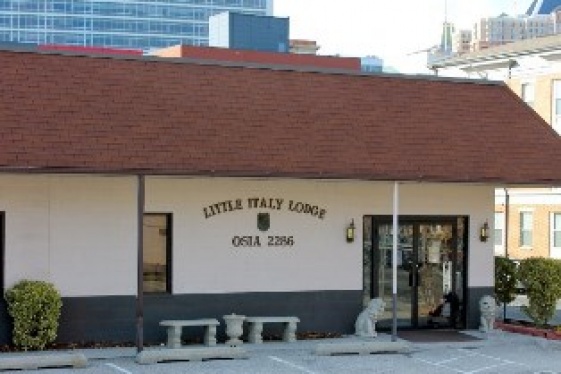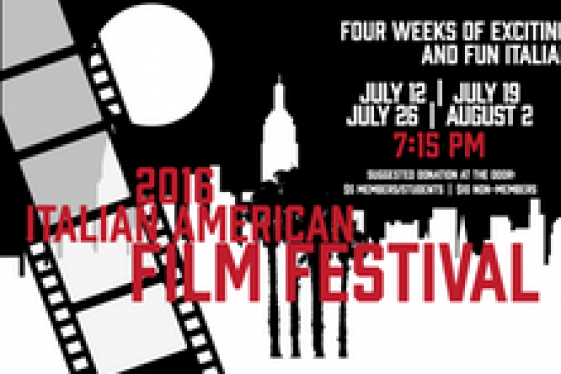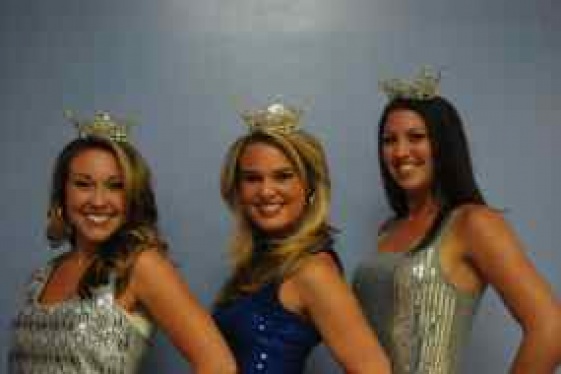
Ron Onesti (President of the National Italian American Sports Hall of Fame)
Sport, spettacolo, cultura, orgoglio: Ron Onesti, tutta l'Italia a Chicago in un solo grande italiano

For 7 years I have been dealing with everything that is Italian American on a daily basis, and by now I have learned to recognize when a name comes back often, involved in many things: that is a leader of the community in which he/she lives and works.
This is what happens in the Italian American community in Chicago: if there is music or the celebration of Columbus, the institutions that represent the Italian spirit or even sport, the name that recurs is always that of Ron Onesti. Recently, but it is only the latest in a series of testimonies to his success, Ron has been named the new President of the National Italian American Sports Hall of Fame. It is with great pleasure that we welcome here on We the Italians this great Italian, who seems to be loved by really everyone, starting today certainly by us too!
Ron, first I'd like you to tell our readers something about yourself. In what region of Italy are your origins, and where you grew up, and how would you define your being part of the Italian American community?
I was born on Taylor Street in the most famous Chicago’s Little Italy, where many of the Italians who came from the 1880s through the 1950s settled. My grandparents came here through Ellis Island from Oliveto Citra in the province of Salerno in Campania, around 1911, and my father was born on Taylor Street as well. He met my mother in World War 2 in Florence, where she was born. He brought her over to Chicago and they got married in 1961, and I was born in 1962.
My Italian heritage was instilled by my parents, and I’m very proud of my heritage. When I was younger, it was not about pushing the fact that you were Italian, it was a little bit the opposite. In those days, if you came to America from Italy it was about being American, not being Italian, and that is the reason why my parents named me Ronald, my brother Richard and my sister Victoria: they wanted to Americanize us to let us fit in. However, the Italian experience of food, family and faith was taught to me when I was a little young boy and I have never let it go. Nowadays, this heritage is widely considered as a value. And, as I was growing older, I felt important to get involved in the Italian American community.
You have produced hundreds of events of all kinds, many of them dedicated to the world of entertainment. Who are your favourite Italian American artists?
What I love doing in my job is to perpetuate the classic artists, especially because there are a lot of young people who don’t even know many of them. They are – let’s say - twenty five year olds and they do not even know who Dean Martin and Frank Sinatra were, or a lot of other wonderful Italian American artists. I also brought many Italian artists to the US. My favorite is Zucchero. We have become good friends, he’s an icon and a legend but also a very humble person.
I brought many others such as Laura Pausini, Renzo Arbore and Eros Ramazzotti. We also brought Il Volo in the US for the first time: they are International Superstars now, but back at that time they were just three Italian talented teenagers, and I remember the four of us playing soccer behind the stage of outdoor venue!
You also produce several festivals. Which are the Italian ones? Is there an anecdote about one of these festivals you would like to share with our readers?
My approach to the concerts or festivals that I organize is interesting because I try to recreate the experience of a family party. A few years ago, I was able to bring Connie Francis to Chicago, making her accept an award that I created: a beautiful Capodimonte piece on which I put a plaque from the little town that she was from. And this was part of a Festival that I organized that was called “The Taylor Street Festival”, where we managed to bring 150,000 people. So Connie Francis flew in from Florida, I picked her up at the airport and I was very excited, and we went to Taylor Street. We organized a tribute concert with more than 5,000 people in the audience, in which many singers, such as Deanna Martin and also The Jersey Boys, sang her songs. Connie was really touched, and she cried. During the concert, I was able to make her sit next to my parents and to my ninety years old aunt, for her it was a dream that came true. When we brought Connie to the stage, she said that it was such a beautiful day and tribute for her, and she felt so much love by the audience that she decided to sing a song and then she did two, Mamma and Where the Boys Are. The people were screaming like crazy for her, she was like a goddess for them.
Another interesting story is the one of a young lady, Crystal Bowersox, who is now a big star of American Idol. My wife liked very much her music, and so I invited her to my venue, the Arcada Theatre. I never even met her before, but when I went to welcome her she jumped right into my arms and started telling me her story. She is from St. Louis and she came to Chicago just a few years before, trying to find her way: she was at the end of her rope, she was almost homeless. But everything changed the day in which a common friend asked me to give her the chance to exhibit in one of the festivals that I organized. He said “I've got a friend down-on-her-luck. Is there any way you could book her to sing?” And you know, for friends I’d do anything, so I said yes, let’s have her. She did really well, people liked her very much, and this was the beginning of her career. And I didn’t remember any of it when I went to welcome her at the Arcada!
For more than two decades, you have been an integral part of the National Italian American Sports Hall of Fame that once was on Taylor Street in Chicago, and now you are the President. Please, tell us more about this wonderful place, its activities, and what is your vision for its future.
George Randazzo, the founder and President of the National Italian American Sports Hall of Fame, unexpectedly passed away about 10 months ago. Therefore the future of the organization was uncertain, it was falling apart, our building had been sold, all the memorabilia put on a storage. Since I was part of it for so many years, it was devastating to me. So the organization put together a board of directors and I was on the board, and they elected me president, in order to perpetuate George Randazzo’s dreams and make this wonderful institution again the international organization that it was once.
We just signed a deal for a building in Harlem Avenue, another Little Italy in Chicago. I’m happy to announce that we will reopen soon! You know Umberto, I actually designed all the exhibits and put all the memorabilia that you saw in the Hall of Fame when it was in Taylor Street. The objective is to create an advanced centre that really teaches the accomplishments of Italians Americans in sports. I would love to expand it in an Italian experience, where we also honour Italian Americans in entertainment, science and other fields. My goal is to let future generations know the inspirational stories of famous Italian American people, and especially what it took to them to become a legend.
The Columbus Day Parade is among the events that you have organized. What do you think about the attacks against Columbus, and what do you think the Italian American community should do?
I am the Vice President of an association called the Joint Civic Committee of Italian Americans that started in 1950s. I keep understand and respect people’s positions about their perception of Columbus Day, but judging if what he has done was good or not is not the purpose of the festivity. Columbus Day is a moment in which we celebrate Italian heritage. I think that protest something that was done 500 years ago does not have sense. So, why don’t we do the same with Pyramids? Egyptians used salves to build them. I repeat, the problem is that people forgot the real meaning of what Columbus Day is.
What I believe is that disagreement is understandable, but disruption and violence is never justifiable. I think that the most important thing is to discuss and try to find an agreement about how our future is going to be.
You may be interested
-
“The Hill” St. Louis’ Little Italy
When the fire hydrants begin to look like Italian flags with green, red and white stripes,...
-
13th Annual Galbani Italian Feast of San Gen...
In September of 2002, some of Los Angeles' most prominent Italian American citizens got to...
-
1st Annual Little Italy Cannoli Tournament
Little Italy San Jose will be hosting a single elimination Cannoli tournament to coincide...
-
2015 Bocce Bash!!
Please join Mia Maria Order Sons of Italy in America Lodge #2813 as we host the 2015...
-
2015 scholarship competition
The La Famiglia Scholarship committee is pleased to announce the financial aid competition...
-
2016 Italian American Film Festival
When: Tuesday, July 12, 2016 | Tuesday, July 19, 2016 - Tuesday, July 26, 2016 | Tues...
-
30th Annual Art Holiday Walk, Winter Winter...
Holiday walk hours Friday, 12/5 noon-9pm, Saturday ,12/6 noon-9pm Sunday, 12/7 noon-6pm. S...
-
A wreath for Columbus and three crowns for t...
The Columbus Day Committee of Atlantic City along with the Bonnie Blue Foundation annually...




























